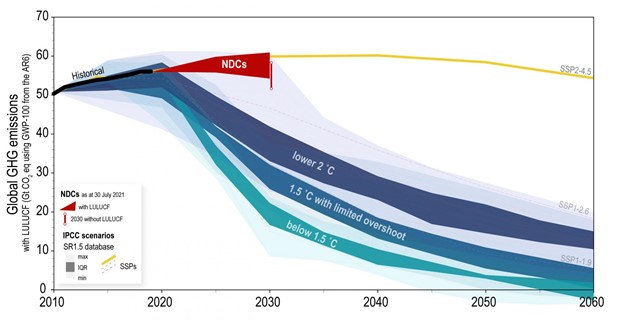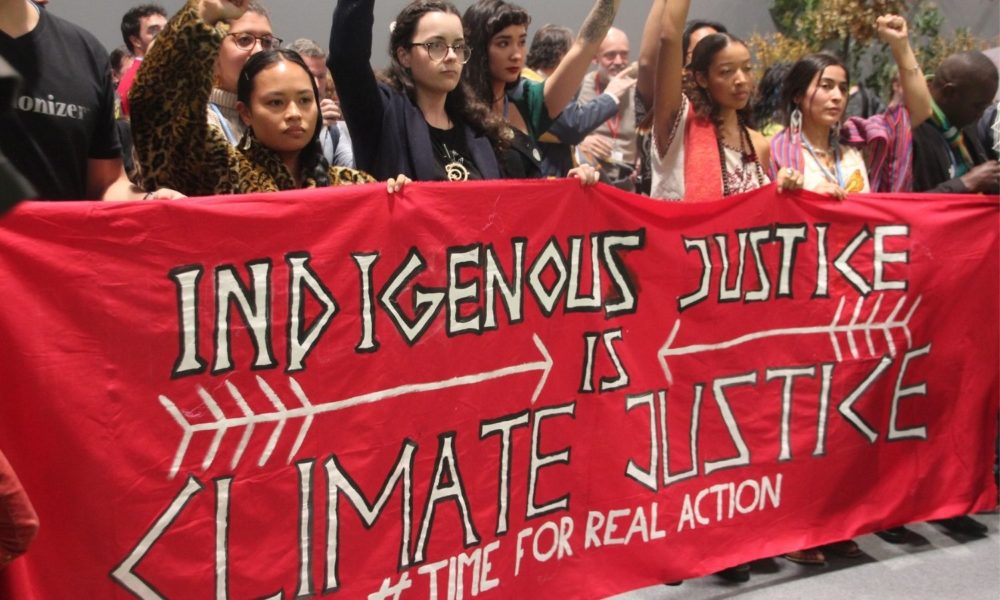We’re less than two weeks out from the start of the annual U.N. international climate talks, also referred to as COP26, which are set to take place in Glasgow, Scotland, from October 31-November 12. The gravity of the moment should be sinking in for world leaders. From a climate-caused drought in Madagascar that threatens food security for millions to record-breaking flooding in Europe, China, and the United States that has taken thousands of lives, the climate crisis is all around us. Recent scientific reports from the Intergovernmental Panel on Climate Change (IPCC) and the International Energy Agency (IEA) emphasize both the grave realities of climate change, as well as the increasingly narrow path still available to us to limit the worst future impacts. Yet richer nations and major emitting countries are still not doing what is necessary, and must step up quickly if COP26 is to be a success.
Three priorities for global climate action at COP26
The basics of global climate action have been clear for decades: we need to cut heat-trapping emissions as quickly as possible, and we must prepare for climate impacts that we’ve locked in already. We must also acknowledge the fundamental inequities baked into this challenge—namely, those that have contributed the least to carbon emissions and benefited least from (or were even harmed by) the fossil fuel-based global economy, are now finding themselves on the frontlines of some of the most devastating manifestations of climate change, including more days of extreme heat, more intense wildfires, storms, and precipitation events, worsening drought, and rising seas.
And we know that the fossil fuel industry and its political allies pose a big obstacle to progress. Companies that have profited from the extraction of coal, oil, and gas must be held accountable for their decades of obstruction and deception that have directly contributed to worsening climate impacts.
At COP26, richer countries must deliver on three fronts:
- Commit to robust heat-trapping emission reductions by 2030, in line with science and equity, and provide concrete policy details on how they will be achieved. In the lead-up to the COP, several countries have put forth new emission reduction goals (Nationally Determined Contributions or NDCs)—including the U.S., which pledged to cut its emissions at least 50-52 percent below 2005 levels by 2030. Those pledges are still collectively insufficient to meet the goals of the Paris Agreement, which include limiting warming to 1.5 degrees Celsius. Laggard nations like Australia and Brazil have yet to announce enhanced pledges. China has not yet provided details on its 2030 NDC. And there are a lot of questions swirling around the U.S.’s ability to deliver on the policies that must underpin its NDC commitment.
- Pledge to ramp up climate finance for developing countries. In 2009, at the Copenhagen COP, richer nations promised to jointly leverage $100 billion per year by 2020 for developing countries to invest in cutting their emissions and adapting to climate change. These wealthy nations have fallen far short of that goal (see also Table 33 in this important new report from WRI). And now the needs have grown larger and even more acute for climate vulnerable countries. The Biden administration’s recent commitment to scaling up international climate finance to $11.4 billion per year by 2024 is a welcome sign, and more will be needed in the years ahead. Finance for adaptation needs to be scaled up and treated on par with finance for mitigation efforts. At COP26, we need to see nations ramp up their climate finance pledges in the near term and commit to a process to enhance funding levels significantly post-2025.
- Ensure meaningful progress on negotiations to address Loss and Damage. The term “loss and damage” refers to those impacts of climate change that cannot be curtailed by actions to cut emissions or through adaptation. (See here for a powerful video explainer.) At COP26, we must see progress on a mechanism for loss and damage finance and a human rights-based framework for addressing the needs of people displaced by climate change and those who are losing and will lose homes, livelihoods, cultural heritage, and more due to climate impacts. This is an arena where richer nations, including the U.S., have steadfastly blocked progress to date; that posture must shift visibly at COP26. In addition, the nations of the world must stand together and use every tool at their disposal—including climate litigation—to make polluters pay for the harms they have inflicted.

A steady stream of scientific reports points the way to what’s urgently needed
The Paris Agreement gave us a science-based goal of limiting global average temperature increase to as close to 1.5˚C above pre-industrial levels as possible. The 2018 IPCC 1.5 Special Report pointed to the need to cut global emissions approximately in half by 2030 and get to net zero emissions by mid-century to meet that goal. We know that even now, at just over 1˚C of temperature increase, the world is experiencing devastating impacts and is on the way to several irreversible ones including loss of large ice sheets and coral reefs. The latest IPCC AR6 Working Group 1 report underscores the urgency to act, even as the latest UNFCCC NDC Synthesis report shows that countries’ emission reduction pledges are far from sufficient.
Last week, the International Energy Agency published its latest World Energy Outlook, which shows that the world is currently far off track in cutting heat-trapping emissions, and that robust policies and investments to drive a sharp, rapid turn toward renewable energy while stopping new fossil fuel investments are vital to meeting global climate goals.
New research also shows that climate change has already affected land areas where 85 percent of the world’s people live. In the U.S., NOAA released a report showing that, as of October 8, our nation has experienced 18 extreme weather and climate related disasters this year that each cost a billion dollars or more, and that caused 538 deaths. Meanwhile Congress continues to debate the contours of much-needed legislation—and worryingly, some of its key climate provisions are in danger of being gutted or watered down.
The inequitable backdrop to COP26
Let’s not forget that the COVID-19 pandemic and the economic crisis it unleashed are still taking a grim toll around the world, exacerbated by climate-related disasters. Last month, UCS joined a global coalition of civil society groups that called for postponement of the COP due to concerns about public health and global vaccine inequity. Now that COP26 is going ahead as scheduled, we must reiterate those concerns and also point out that an in-person COP is not the climate win we need.
What the world needs is concrete actions from richer countries and major emitters that deliver the deep emission reductions and the climate finance required to meet global climate goals, and action on loss and damage for climate-vulnerable nations.
In this consequential decade for climate action, COP26 comes at a time when the world is standing on the brink of catastrophic climate change. We still have choices. We can still break free of a fossil-fueled world to one that is cleaner, safer, healthier, and fairer. But world leaders must act fast and decisively—something they have largely failed to do up to this point—or we will squander this quickly narrowing window, and current and future generations will pay a severe price.

